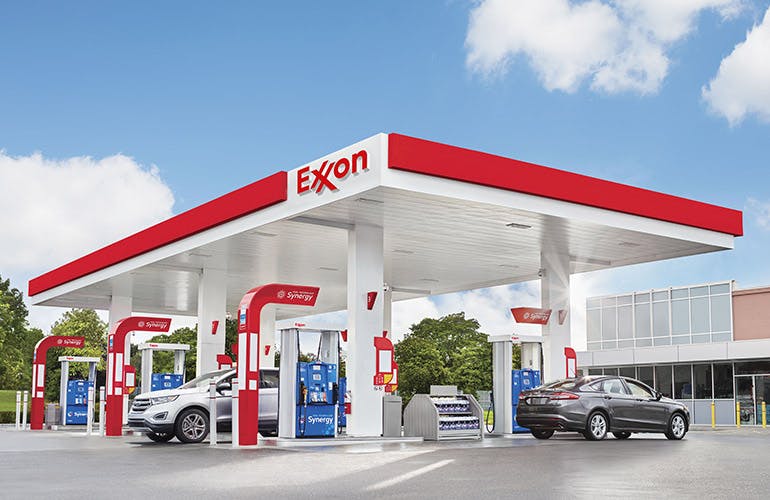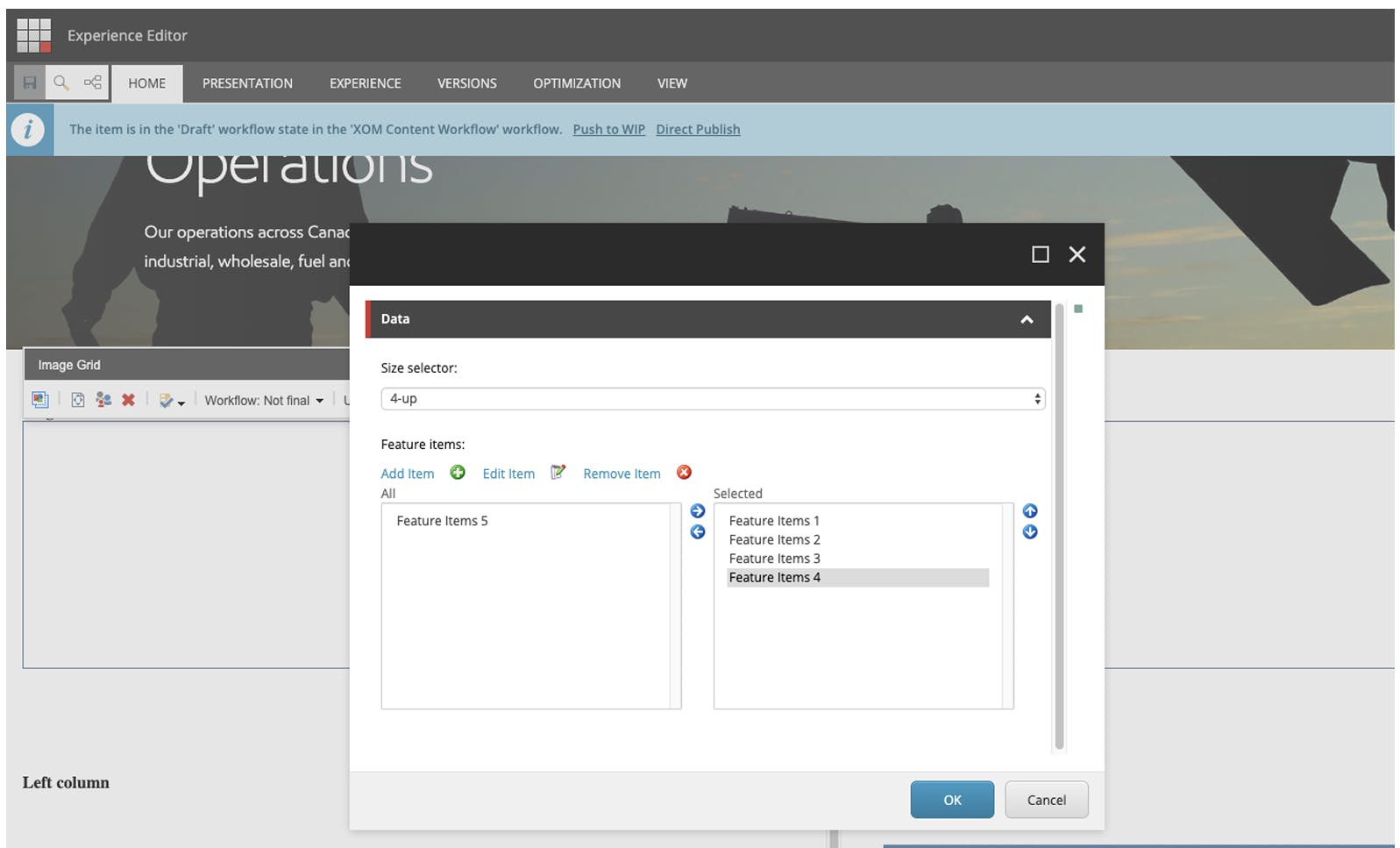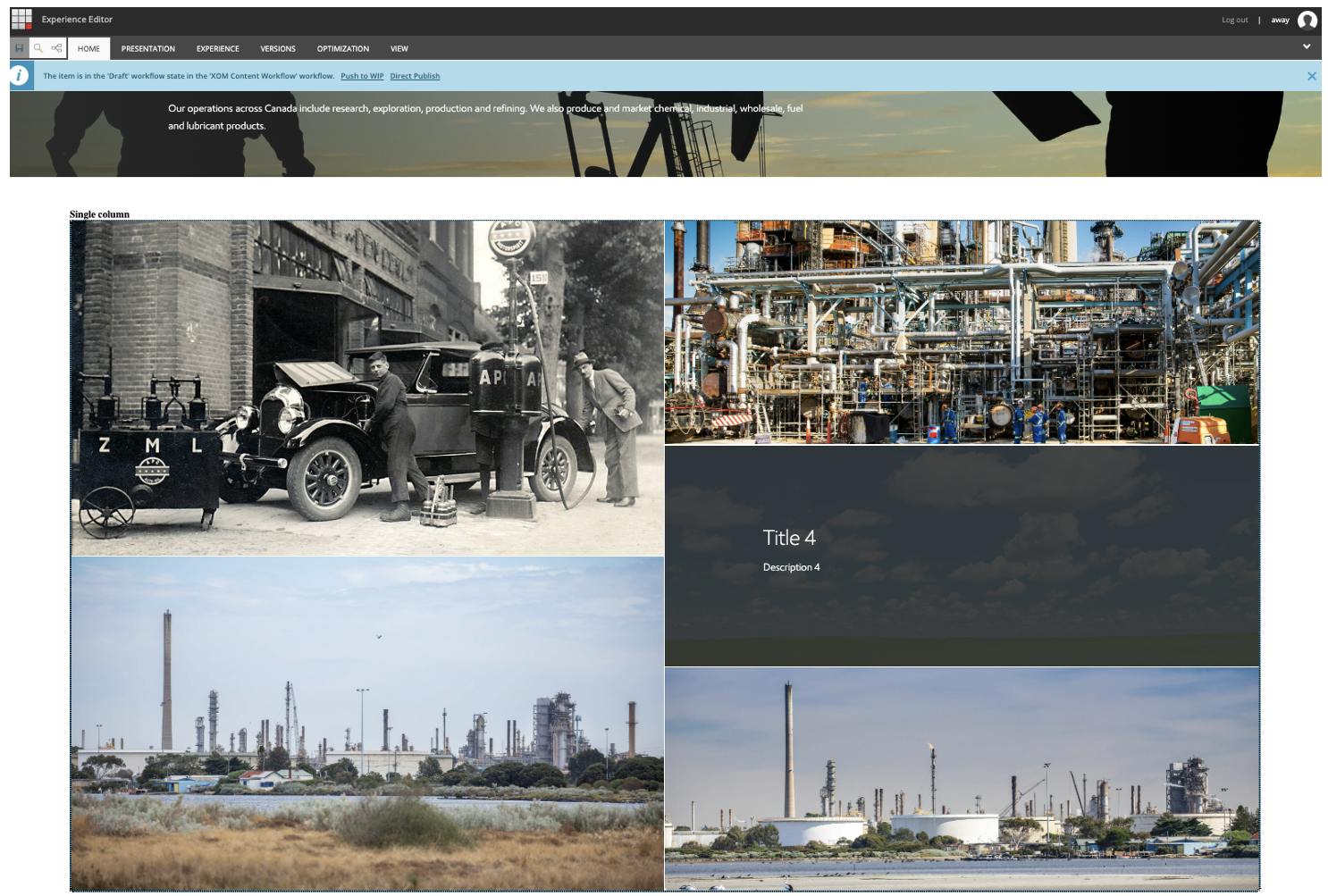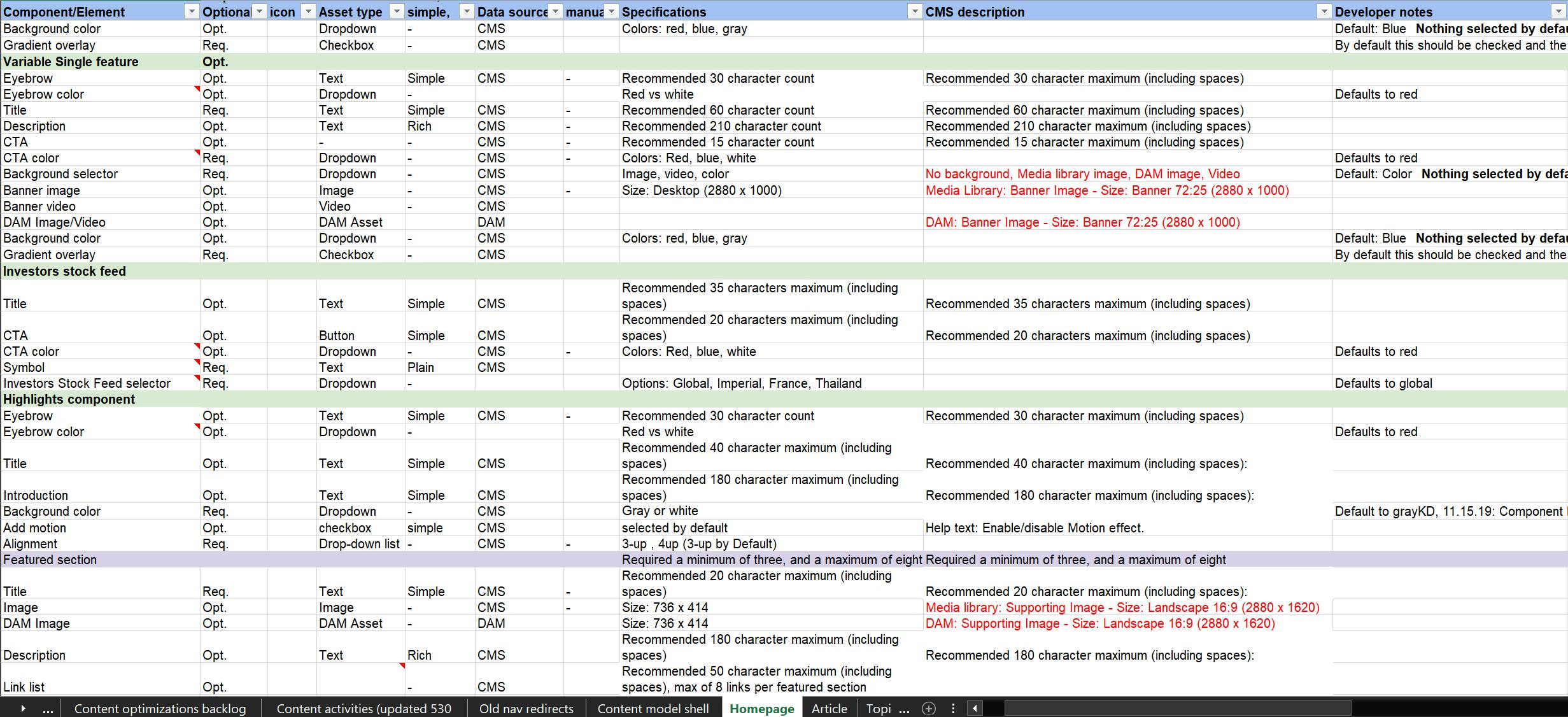
As Senior Product Manager at Huge, I led a comprehensive digital transformation for our key client ExxonMobil, encompassing over 50 corporate websites across 6 continents supporting 28 languages, built on outdated Sitecore 8.x and 9.0 instances. This initiative addressed both user experience fragmentation and escalating operational costs by migrating to a unified, cloud-native Sitecore 10.2 environment on Azure. My dual objectives were to modernize ExxonMobil's digital presence—improving scalability, performance, and cohesive experience for both content editors (internal users) and external investors (end users)—while implementing advanced FinOps practices to reduce cloud spending and improve forecasting accuracy for ExxonMobil's IT teams. Spoiler alert: This key project succeeded. ExxonMobil, one of Huge's biggest clients, was so happy that they extended their contract with us. Thus, management was happy and gave me a promotion.
Corporate websites consolidated into a unified Sitecore 10.2 platform with 99.99% uptime
New feature adoption with 30% site engagement increased via enhanced user experience
Sprint predictability increased, reducing meeting time by 3 hours/week with dual-track Agile
Cloud infrastructure costs reduced. 35% of cloud spend forecasting accuracy improved.
ExxonMobil faced a complex dual challenge that spanned both product and financial dimensions. On the product side, multiple sister sites operated on legacy versions of Sitecore (8.x and 9.0), creating a disjointed navigation experience that frustrated both ExxonMobil's internal content teams and external stakeholders like investors and partners. The technical debt had accumulated to a point where simple content updates required excessive development support, slowing time-to-market for critical communications. Our analysis showed that content editors spent approximately 15 hours per week navigating between different CMS instances and managing inconsistent templates.
Compounding these product challenges was a significant organizational transition within Huge—the handoff of this ExxonMobil project from an established engineering hub in Colombia to a new hub in Vietnam with key stakeholders and vendors located in the U.S. and India. This transition was hampered by a 13-hour timezone difference, outdated delivery playbooks & product roadmap, and an inefficient GitHub branching strategy using a monolithic repository structure that created merge conflicts & deployment delays, further hindering agile execution.
From a financial perspective, ExxonMobil had no formal FinOps processes in place. Our analysis of ExxonMobil's historical data from AWS Cost Explorer and Azure Cost Management revealed alarming inefficiencies: unpredictable cloud expenses exceeding $1.2M annually and growing 15% year-over-year, many App Service Plans significantly overprovisioned (P3V2 instances running at less than 10% CPU utilization), SQL databases using DTU-based pricing instead of vCore, and numerous staging environments remaining active 24/7 despite only being used during business hours. Idle resources were consuming nearly 30% of the cloud budget—a significant waste given ExxonMobil's scale. The environment lacked consistent resource tagging, making it impossible to allocate costs properly across ExxonMobil's core business units (Upstream, Product Solutions, Low Carbon Solutions), resulting in significant waste and budget uncertainty.
My mission extended beyond a typical CMS migration to orchestrating a comprehensive digital transformation. I needed to consolidate ExxonMobil's corporate websites into a unified Sitecore 10.2 platform on Azure while ensuring high availability across their core business units (Upstream, Product Solutions, and Low Carbon Solutions). Furthermore, I also aimed to drive site engagement and new feature adoption for the websites through targeted discovery using Jobs-to-Be-Done frameworks with internal content editors and external stakeholders.
I had to tackle the operational challenges from the transition by revamping agile processes to improve sprint predictability, reduce meeting time, and set up standardized documentation to optimize my engineering team's workflow across four different time zones.
I needed to establish a FinOps framework to reduce cloud costs and improve forecasting accuracy for ExxonMobil's IT and Finance teams while transforming their perception of the digital ecosystem from a cost center to a strategic asset.
I began with intensive discovery, conducting detailed interviews and JTBD workshops with ExxonMobil's digital leadership, content teams, and key stakeholders across their business units. These sessions revealed that the content editing experience was the highest priority pain point—editors were spending excessive time on routine updates due to the fragmented CMS landscape.
Using the insights gathered, I developed a comprehensive product roadmap prioritized through Opportunity Solution Trees, which visualized how each feature would address both internal users' and end users' needs. For detailed event tracking to monitor the sites' and the new features' performance, I also spearheaded the implementation of Google Analytics 4 into the CMS platform with custom event tracking configured for key conversion points and content engagement metrics. Simultaneously, I identified end users' drop-off points through heatmap analysis and implemented targeted UX improvements based on A/B testing and event tracking.
Working with Sitecore architects, I designed a hub-and-spoke architecture for the new platform, implementing Sitecore SXA (Sitecore Experience Accelerator) with multi-site capabilities to support regional variations while maintaining global governance. This approach enabled content reuse across sites while allowing for market-specific customizations where regulatory requirements demanded it.
The transition from Colombia to Vietnam presented unique challenges with the 13-hour time difference. I conducted a thorough audit of existing workflows, identifying outdated processes that were hampering productivity. To address these inefficiencies, I implemented dual-track Agile methodologies across teams in the US, Colombia, Singapore, and Vietnam, separating discovery from delivery to maintain velocity momentum while incorporating new insights for feature development.
By closely monitoring and documenting the inefficiency evidence from our team during the transition, I worked with my engineering team to craft new workflows with positive projected outcomes and risk mitigation strategies. As a result, I completely revamped the delivery playbook and streamlined the GitHub branching strategy by migrating from the monolithic repository to a microservices-inspired approach with separate repositories for key components: Foundation (core framework), Feature (functional modules), and Project (site-specific implementations). This architecture aligned with Sitecore's recommended Helix design principles and dramatically reduced merge conflicts.
I also set up centralized knowledge transfer and communication spaces in Notion and Coda to reduce onboarding time for new team members by 60% and eliminate excessive stand-up meeting time for all sides, given the time zone differences. We implemented a "follow-the-sun" workflow with clear handoff protocols between regional teams—developers in Vietnam would complete their work and document status in Coda before handing off to the Colombia team, who would then review and continue development before passing to the US team. This continuous development cycle maximized productivity across time zones while ensuring consistent quality through detailed handover documentation. Then, I engaged the Program Director in the U.S. and the Tech Director in Columbia in our internal process optimization discussions to acquire executive buy-in for implementing these new initiatives.
To improve quality and delivery confidence, we implemented Azure DevOps CI/CD pipelines with automated testing gates that prevented regressions during handoffs between teams. This approach increased deployment frequency from bi-weekly to twice-weekly releases with significantly fewer rollbacks.
Working closely with solution architects, we designed a Sitecore architecture that centralized core components while allowing for business unit customizations. We standardized on Sitecore 10.2 XP and leveraged Azure's auto-scaling and load-balancing capabilities to ensure optimal performance under varying traffic conditions. For the infrastructure, we implemented Web Apps for front-end delivery, App Service Plans for CM instances, and Azure SQL with geo-replication for database resilience—a crucial consideration for ExxonMobil's business-critical content that required 99.99% uptime guarantees.
The implementation followed a phased approach, prioritizing high-traffic main sites (Investor Relations, Corporate News, and Sustainability sections) and critical functionalities for migration and deployment first while keeping the remaining sites running in parallel. Rather than a simple lift-and-shift, we used this opportunity to implement a structured content model based on ExxonMobil's recently updated brand guidelines.
We implemented Sitecore's workflow capabilities with role-based permissions aligned to ExxonMobil's organizational structure, supporting their complex review and approval processes. This was particularly important for legally sensitive content like financial disclosures and regulatory filings, which required specialized approval chains for different regions due to varying compliance requirements in the EU, China, and Brazil. Throughout the migration, we maintained rigorous testing protocols to ensure content integrity and consistent performance, achieving 99.99% uptime across the platform.
The financial optimization began with a deep analysis of historical cloud spending patterns. Using regression analysis on historical usage patterns, we forecasted future cloud consumption and identified optimization opportunities with the highest ROI. Working with our Lead DevOps and Sitecore engineers, I implemented several Azure best practices following Microsoft's Well-Architected Framework:
A critical foundation for our FinOps practice was implementing a mandatory tagging strategy using Azure Policy and Terraform. We assigned tags like CostCenter, BusinessUnit (Upstream, Product Solutions, Low Carbon Solutions), Environment (Prod, Stage, Dev), and Project, aligned with ExxonMobil's organizational structure. This tagging strategy supported our detailed cost allocation methodology, allowing us to attribute expenses to specific business functions, features, and initiatives.
To provide actionable insights, I developed a centralized FinOps dashboard in Looker that visualized cloud spending in real time, connecting business metrics with cloud costs to demonstrate ROI. We established a cross-functional FinOps governance committee with bi-weekly review meetings to evaluate spending trends and optimization opportunities. I helped ExxonMobil's IT and Finance teams begin with a showback model to raise awareness across teams, later transitioning to a structured chargeback model with documented calculation methodologies that assigned financial responsibility to business units. Automated alerts through AWS Budgets and Azure were also implemented to prevent cost anomalies before they became significant issues, with escalation paths defined for different severity levels.
My comprehensive approach delivered transformative results across all dimensions. We successfully consolidated 50+ websites into a unified Sitecore 10.2 platform, increasing site engagement by 30% through consistent navigation and optimized user journeys. Content editors reported a 65% reduction in time spent managing content updates, while the 55% feature adoption rate validated my user-centered approach. The SXA-based architecture accelerated the creation of new regional microsites from weeks to days, which was particularly valuable for market-specific campaigns and regulatory announcements that required rapid deployment.
Operationally, my revised Agile methodologies and GitHub branching strategy increased sprint predictability by 40% and reduced meeting time by 3-4 hours weekly. The implementation of Helix principles and CI/CD pipelines reduced deployment issues by 75%. Standardized documentation cut ramp-up time by 60%, creating a more efficient delivery model that smoothed the transition to the Vietnam engineering hub. Deployment frequency increased from bi-weekly to twice-weekly releases with significantly fewer rollbacks.
On the financial front, we achieved the targeted 25% reduction in cloud costs through Azure-specific optimizations. The shift to vCore SQL with Elastic Pools alone saved approximately $150K annually, while the right-sizing of App Service Plans and implementation of auto-scaling reduced compute costs by $220K. The Azure Hybrid Benefit application delivered an additional $180K in savings. Our tagging strategy and Looker dashboards reduced cost ambiguity by 50% while improving forecasting accuracy by 35%.
The project's success—delivered on time and under budget—resulted in ExxonMobil extending our contract and expanding our scope, which ultimately earned me a promotion. More importantly, we established frameworks for both product development and FinOps that continue to guide ExxonMobil's digital transformation initiatives and have become a model for other enterprise clients at Huge.





